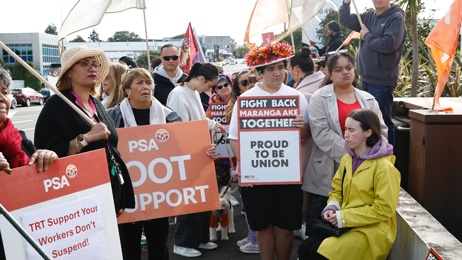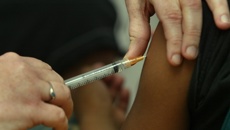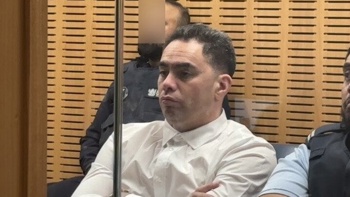When Kurtis Jones was experiencing abdominal pain, he put it down to overdoing it at rugby training.
But when it didn’t get better, the then 28-year-old went to see his GP.
In November 2013, the former Rotorua Boys’ High School student and Waikite Rugby Club player was diagnosed with testicular cancer.
After 14 months of treatment, Jones died in April 2015, aged 29.
His partner, Melissa Ewins, is speaking out as part of testicular cancer awareness month and urged men not to flag symptoms off as “it’ll be all right” or “I’ll deal with it another day”.
“The sooner you get on to these things, the better the outcome.”
Testicular cancer is the most common cancer among young men aged between 18 and 39. Each year in New Zealand, 175 men are diagnosed and eight will die from it.
Ewins, an emergency nurse at Whangārei Hospital, said Jones did not present with symptoms typical of someone with testicular cancer, such as swelling or redness.
She said he was at rugby training when he had abdominal pain, which Jones attributed to overdoing it.
Melissa Ewins. Photo / Tania Whyte
“But a few days later it just didn’t get better and that’s when he went to see the GP.
“Within two weeks he was off seeing an oncologist.”
Jones endured 14 months of treatment, including three rounds of chemotherapy, surgeries and stem cell transplants before exploring an alternative treatment of intravenous Vitamin C.
“He was just exhausted,” she said.
Ewins said she and Jones were living in Auckland at the time of his diagnosis. Ewins was studying nursing but dropped out so she could go to work, pay the bills and look after Jones.
She said the hardest thing for Jones was watching her and his family being fearful.
“We just didn’t know what was going to happen ... For myself, I don’t think that I even considered he would die from this.”
Ewins said Jones was a personal trainer who ate well and never drank alcohol or smoked.
“He lived a very, very healthy lifestyle ... His whole world was around being fit and well and it just hit him.”
Ewins praised his “resilience” and the “fight” he fought against cancer.
One year after Jones died, Ewins returned to finish her nursing studies.
Stephen Jones, Kurtis’ father, described his son as a “tough little bugger” who would have “put up” with the pain.
“It was, to say the least, horrible. Watching my boy deteriorate.”
His message to other men was simple: “We’re hopeless in seeking early intervention. We wait until it’s too late or so long down the track that it becomes so hard for the medical people to do something.
“Don’t sit on it until it’s [at] such a stage that it’s life-threatening.”
Tauranga urological surgeon Dr Jim Duthie said there were two “peak” age groups who typically got testicular cancer — adolescent males and older men.
“The idea that you’re too young to have cancer just doesn’t apply with testicular cancer.”
Duthie said the most important thing was self-examination. He recommended for men once a month while in the shower check the sides of their testicles.
“Make sure that there’s no new lumps or bumps and that things have stayed the same.
“It’s okay to have some asymmetry, one might be bigger than the other, so long as that’s not changing.
“It doesn’t cost you much and it might save your life.”
Duthie said testicular cancer had about a 98 per cent survival rate.
“The problem is that the longer you leave it, the more treatment you’re going to need. So it’s not just that your chances diminish with time, it’s just that the treatment is a lot more rigorous as well.
“As with most things, getting on to it early is the key.”
Duthie said the overall message for awareness month was for men to take better care of themselves.
“Just thinking, my health is worth something.
“It’s worth staying well for not just me but the people around me who depend on me [and] care about me. It’s just such an easy thing to do an examination.
“If in doubt, see a doctor. Just get it checked out.”
/cloudfront-ap-southeast-2.images.arcpublishing.com/nzme/PVAZU6EZZX3H253EHZHSS5LEMU.jpg)
Testicular Cancer Foundation chief executive Peter Dickens. Photo / Supplied
Testicular Cancer New Zealand chief executive Peter Dickens said sometimes symptoms could be “painless”.
“Young men in particular, either through a sense of whakamā [shame, embarassment] ... will not come forward quickly.”
Dickens also advised men to “get to know your testicles” and check them every month.
“If you find there’s a change in size or a painless lump ... you need to talk to someone you trust.”
“Because testicular cancer is so treatable ... if you catch it early, the big thing that New Zealand guys have to remember to do is to not just submit and think it’s going to go away.
“As soon as they find issues with testicles, go ask the question to a health professional whether everything’s okay down there.”
For awareness month, Testicular Cancer NZ and Clemenger have created a “fondle filter” on Snapchat.
”The Fondle Filter enables us to make feeling for lumps or any changes less scary. Fun even. Fondle this, then fondle your own. And if you feel something, notice any changes in the size or shape, go and see a health professional immediately,” Dickens said.
To access the filter, visit the Testicular Cancer NZ website.
Take your Radio, Podcasts and Music with you

/cloudfront-ap-southeast-2.images.arcpublishing.com/nzme/OUVSW5FFYRFHFL5B76FU6LCJEM.JPG)








